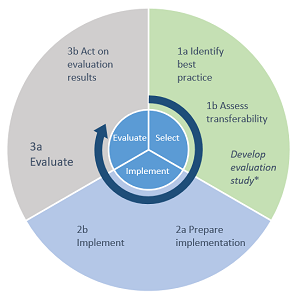Health
Best practices in public health
|
Changes in population structure, built environments, lifestyle behaviours, and patterns of disease have caused major public health challenges. These include rising rates of obesity, mental ill-health and new and re-emerging infectious diseases, all of which pose a health and economic burden. This stream of work by the OECD helps countries tackle these challenges and therefore strengthen their public health systems by encouraging the assessment and dissemination of proven best practice interventions. Best practice interventions focus on those designed to prevent and manage non-communicable diseases such as cardiovascular diseases, diabetes and cancers, given they account for the vast majority of public health expenditure. The stream of work also complements the OECD series of Public Health Reviews by providing practical examples of best practices that, if implemented, would strengthen public health systems. |
|
FRAMEWORK
 |
The analyses conducted as part of this stream of work are based on a standard framework described in the Guidebook on Best Practices in Public Health. That is, how to:
Note: * It is important to develop the evaluation study at the beginning of the cycle. Details on developing an evaluation are however discussed in Step 3 (“Evaluate”) of the Guidebook. |
PUBLICATIONS
- Guidebook on Best Practices in Public Health (March 8, 2022)
- Snapshot summary of the Guidebook on Best Practices in Public Health (March 8, 2022)
The Guidebook outlines a three-step framework to assist policymakers select, implement and evaluate real-world public health interventions. The Guidebook is applicable to all types of public health interventions such as those addressing alcohol and tobacco consumption, obesity, physical inactivity, multimorbidity and mental health as well as infectious diseases. Although designed for policy makers, the guidebook is also a useful tool for other stakeholders involved in planning, delivering and transferring public health interventions.
Access the several Booklets of Best Practices in Public Health:
Overweight and obesity affect over half of all men and women in OECD countries. This has significant health and economic consequences. As part of OECD’s work on promoting best practices in public health, this report outlines policy recommendations on how to address two leading overweight risk factors: poor diet and lack of physical activity. Policy recommendations are drawn from a review of high-priority interventions implemented in OECD and EU27 countries.
- Integrating Care to Prevent and Manage Chronic Diseases - Best Practices in Public Health (May 10, 2023)
People today are living longer with complex health needs but often receive fragmented care. This has prompted countries to support patient-centred, integrated care models. As part of OECD’s work on best practices in public health, this report outlines policy recommendations to prevent and manage chronic diseases by integrating care. Policy recommendations were drawn from a review of key integrated care models implemented in OECD and EU27 countries.
Additional analyses of best practices in public health
- Prehab - pre-operative intervention for high-risk patients undergoing major elective surgery (February 2024)
- Options for an EU-wide front-of-pack nutrition label (February 2024)
FURTHER READING
- Find out more about our work on Public Health
- The Heavy Burden of Obesity - The Economics of Prevention (October 2019)
- The Burden of Physical Inactivity (forthcoming)
- Cluster analysis to assess the transferability of public health interventions (OECD Health Working Paper No. 133, May 2022)
- Modelling work in public health: OECD’s SPHeP models
- Read about opioids use in Health at a Glance 2019: OECD Indicators
- Health Policies
- Health Publications
CONTACT
For more information, please contact health.contact@oecd.org

Follow us on Twitter @OECD_Social
Related Documents
